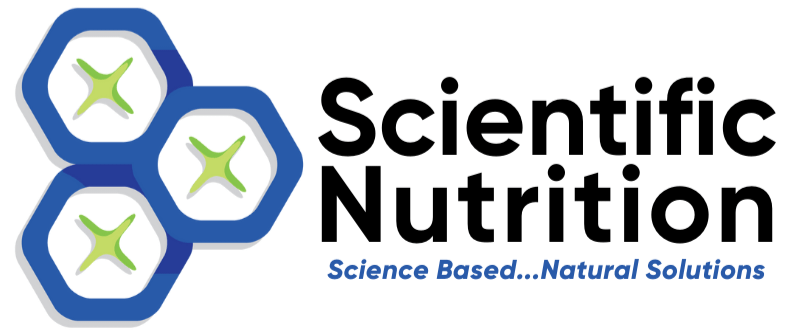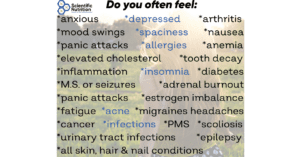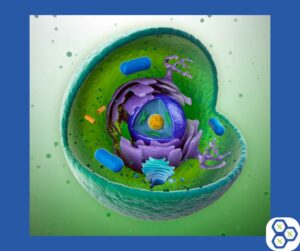Understanding your hair analysis results can be confusing!
I want to help you to gain clarity when looking at your hair analysis results. Within this blog, I’ll break down just five of the minerals I find people need the most help with in understanding.
“What do you do when you get your hair analysis results back?”
It may look complicated, but I don’t want you to be concerned – I will explain it to you. Hair mineral analysis represents the mineral levels in your body, especially in your skin, organs, and muscles, as well as heavy metal toxicity. It tells us how your body is working.
I know you can feel anxious to understand what’s going on and how to start making healthy changes to feel better. I’m here to give you a little heads up on what to expect! And for this, we’ll be looking at our sample client, Fred.
All of the results in the analysis have the utmost importance concerning your health. I’m going to look at five of the 27 key points today and explain how they work in your body, what foods you can find the nutrients in, and why sometimes supplementing works best.
I want this to be a primer for you, so when you sit down and talk with me during the follow-up sessions, you’ll begin to understand how these play an integral role in your health and wellness.
Calcium or Ca levels on your hair analysis results
We all should be getting calcium because calcium is one of the primary components of our bones. And your heart muscle depends on calcium to get enough energy to beat smoothly.
Do you experience brain fog every so often? It could have to do with the lack of calcium in your system because many of the neurotransmitters in our brain require calcium to function properly. Another factor may be a heavy metal toxicity of copper or aluminum as well.
When you look at your results, you may be surprised at just how much calcium you need to feel better. Many people do not receive enough calcium in their diet (just like Fred), so adding a good supplement is essential.
The recommended daily allowance is 1000 milligrams of calcium per day, but many need much more. On the hair analysis, 400ppm of calcium in your hair is ideal, but Fred’s is far below that.
If you want to start eating a little bit more calcium, I recommend leafy greens such as cabbage, kale, and collards. Seaweeds are very high in calcium, as are hard cheeses, molasses, nuts, and natural brewer’s yeast. A proper calcium supplement is helpful, especially when your levels are low.
Iron or Fe
Iron binds our blood, forming the central structure of the hemoglobin molecule. Hemoglobin is responsible for carrying and releasing oxygen into our cells. It’s also critical for maintaining healthy immune function, increasing nearly every aspect of are offensive immune system, and keeping us youthful by helping form collagen that keeps our skin firm and taught.
The recommended daily allowance of iron for men is 8 milligrams per day and 18 mg per day for women. You should get at least 1.2 ppm and up to 3.5 ppm on your result; otherwise, you are too low.
Although, you may not need to supplement at all if you’re consuming a healthy amount of seaweed every day. Kelp contains 100 mg per 3-oz serving. But, if seaweed is not on your typical menu, blackstrap molasses, and pumpkin seeds are all excellent sources. Most nuts, seeds, eggs are also good sources.
Potassium or K
One of the critical electrolytes, along with sodium and chloride, potassium is a nutrient most people get enough of, and you can see Fred is really close. But, if you’re eating a diet that’s higher in processed food or under significant stress, you could be displacing your sodium-potassium balance, causing potassium insufficiency, cell hyper-permeability, and hormone imbalance.
Not having enough potassium in your diet can cause breathing problems, weakness, heart palpitations, and nerve problems. I recommend being tested for your potassium and sodium levels and balancing them first before supplementing with potassium.
Fortunately, many foods are very high in potassium, and when you eat your potassium, you’re less likely to overdose – which is especially true if you are on diuretics or other medications that cause you to excrete potassium and sodium into your urine to lower blood pressure potassium. Foods high in potassium include seaweed, seeds, herbs and spices, and green leafy vegetables.
Zinc or Zn
If you’re feeling a little off, it could be your hormones, which might tie back to a zinc deficiency. And many of the metabolic reactions that use our hormones to create energy, heal wounds, stimulate the immune system, and produce beautiful hair and nails, use zinc as a critical factor.
Feeling fatigued and getting sick can be linked to a zinc deficiency. Unfortunately, most people don’t get enough zinc, like Fred, and try and supplement with lozenges and pills that aren’t right for our bodies. Too much zinc supplements could cause other mineral deficiencies, so balance is the key. That’s one of the topics we cover in our follow-up sessions.
Please note that zinc will DEcrease your cell permeability so taking it can be harmful if you do not know where your Sodium/Potassium ratio is currently. This would allow viruses and toxins to easily enter into your cells and decrease the absorption of nutrition as well as oxygen usage. Minerals are necessary, powerful and should not be done as guesswork.
You should get between 8 and 11 mg per day of zinc. Fortunately, seaweed again is a top contender for getting enough zinc. You can also find potent sources of zinc in ginger, red meat, nuts and seeds, and eggs.
Sodium or Na on your hair analysis results
Pairing up with potassium, sodium plays a critical role in many of our health functions. But, this is one supplement very few people need to add to their diet. If you’re eating any processed foods, you add iodized (a lousy form) salt to your diet. Fred’s analysis shows he gets plenty of sodium in his diet, and he admits to eating a few too many processed foods.
The most common sign of having too much sodium is higher blood pressure. But, if you have too much sodium, you most likely have not enough potassium – just like Fred. Bringing these two into balance helps significantly increase energy, decreases fatigue, and improves your immune system.
In conclusion-
Knowing precisely what your body is doing helps improve the types of food you eat and your activities. Sometimes, all you need is a small supplement to help improve your life. That’s why I recommend talking with us to get your hair analysis done, so I can explain if a supplement is necessary, what foods to eat to help, and how to make sense of everything.
You should always remember that each nutrient links with one another in very complex ways. Simply supplementing with one particular supplement could throw many others out of alignment. Let me help you with the plan to bring all of your numbers in the balance.
Are you ready to see what your body needs? LET’S CHAT about your health goals!
If you have already done a Hair Analysis but don’t know how to interpret it, read more here.
Scientific Nutrition, LLC © 2020




